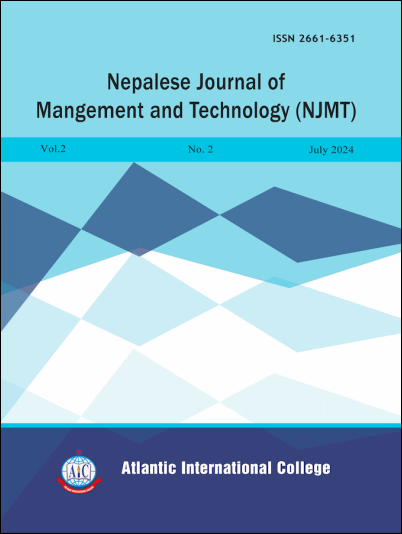Impact of Financial Literacy on Financial Behavior among Sugarcane Farmers
DOI:
https://doi.org/10.3126/njmt.v2i2.68711Keywords:
Financial literacy, saving behavior, spending behavior, investing behavior, borrowing behaviorAbstract
This research investigates the status of financial literacy and its influence on the financial behavior of Sugarcane Farmers. Data were gathered between March and May of 2023 in Bardibas Municipality, Mahottari district, Nepal, involving 350 Sugarcane Farmers through face-to-face interviews utilizing a well-structured questionnaire. Analysis was conducted using Smart-PLS (version 4) and SPSS (version 22), calculating data frequency, percentage, mean, standard deviation, path coefficients, t-statistics, and R-squared. Hypotheses were tested employing path coefficients and t-statistics. The study reveals a significant, positive impact of financial literacy on financial behavior, encompassing saving, spending, investing, and borrowing behaviors. Notably, the research identifies a deficiency in financial literacy among these farmers, which correlates with diminished tendencies in saving, spending, and investing behaviors. Conversely, borrowing behavior remains relatively stable. These findings underscore the necessity for targeted financial literacy programs for sugarcane farmers in Nepal, emphasizing comprehension of financial concepts such as simple interest, compound interest, risk management, rational borrowing, and investment diversification. Such initiatives directly shape their financial decision-making and overall financial well-being, signaling important implications for policy-makers.
Downloads
Downloads
Published
How to Cite
Issue
Section
License
Copyright (c) 2024 Nepalese Journal of Management and Technology

This work is licensed under a Creative Commons Attribution-NonCommercial-NoDerivatives 4.0 International License.
This license enables reusers to copy and distribute the material in any medium or format in unadapted form only, for noncommercial purposes only, and only so long as attribution is given to the creator.




